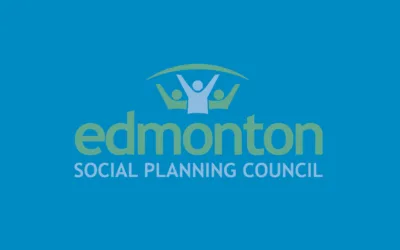Blog: Renewed Focus on an Old Problem: Youth Opioid use in Alberta from 2018-2021

December 9, 2021
Jayme Wong, ESPC volunteer
Renewed Focus: A Follow-Up Report on Youth Opioid Use in Alberta was published by the Office of the Child and Youth Advocate Alberta, an independent office of the Legislative Assembly of Alberta, in June 2021. The report was published three years after Into Focus: Calling Attention to Youth Opioid Use in Alberta (2018), a report that offered five recommendations to government bodies and agencies to address the increasingly disconcerting opioid-related deaths among Albertan youth.
Since the 2018 report, little has been done to address the pressing situation, with “young people . . . dying in even greater numbers today than when [the original report] brought this issue into focus nearly three years ago” (p. 5). The follow-up report revisits the original five recommendations and adds a sixth based on interviews with Albertan youths, non-profit and youth-serving agencies, and provincial government ministries and agencies.
The recommendations made in the 2021 report are as follows:
1. “Alberta Education and local school authorities should increase the level of health promotion and age-appropriate substance use education in curriculum from elementary through high school.”
Recommendation 1 focuses on health promotion, calling on schools to provide learning opportunities for substance use education. Notably, the report warns that the curriculum “needs to include the realities and impacts of drug use through individuals sharing their lived experience” (p. 13), pointing to the failures of abstinence-only approaches.
2. “Child-serving ministries should have appropriate substance use intervention training to increase the capacity and knowledge among direct-service professionals to ensure young people get the right services at the right time. This should be part of the provincial youth strategy.”
Recommendation 2 urges agencies and ministries to intervene early, providing key supports—such as housing and culturally-specific programming—to ensure safe and healing environments for youths before they turn to opioid use.
3. “Alberta Health Services should strengthen their substance use related interventions for young people. Special attention needs to be given to interventions specific to youth opioid use and to services for young people with co-occurring issues of mental health problems and/or cognitive disabilities.”
Recommendation 3 advocates for “flexible and creative approaches” (p. 16) within the spectrum of interventions for young people. Strategies such as medical treatment and harm reduction are needed to “meet young people where they are at” (p. 22) and provide respectful, non-judgmental support rather than finding a one-size-fits-all solution.
4. “Alberta Health Services’ Youth Addictions and Mental Health programs should have a more inclusive practice of involving families and significant individuals, with specific attention to substance use prevention and treatment for young people.”
Recommendation 4 highlights the involvement of families in youth substance abuse. This recommendation suggests providing education and resources to families seeking long-term support and looking to create a stable, supportive environment for individuals who are struggling with opioid addiction.
5. “The Ministry of Health should undertake a review of the Protection of Children Abusing Drugs (PChAD) Act and its policies, so the related services better meet the needs of young people and their families.”
Recommendation 5 is a critique of the PchAD Act for being inaccessible and insufficient, citing as primary issues limited spaces in the program, too short a program period, and inadequate treatment services.
6. “The Government of Alberta, with leadership from the Ministry of Health, should establish a dedicated body such as a panel, committee, or commission to develop and support implementation of a youth opioid and substance use strategy.”
The newest strategy recommendation suggests that an evidence-based approach—with contributions by people with lived experience—is needed to develop new ways to support the implementation of youth opioid and substance use prevention. The report notes, “A key part of this youth strategy must include a clear focus on Indigenous young people . . . It is crucial that the cumulative impacts of colonialism, intergenerational trauma, and the opioid crisis be recognized” (p. 26). The hope is that the creation of a diverse panel will generate more comprehensive and accessible legislation and services.
There is a conscious effort to use inclusive language, such as framing findings as “we heard”—making a strong argument for involving youth in youth-based legislation. While the report highlights the “promising” progress that has been made to opioid and substance use legislation in Alberta since the 2018 publication, there is still a long way to go. Rather than creating policies within a vacuum, perhaps listening to the young people currently experiencing the opioid crisis is the first step forward.
Office of the Child and Youth Advocate Alberta. (2021). Renewed Focus: A Follow-Up Report on Youth Opioid Use in Alberta. https://www.ocya.alberta.ca/wp-content/uploads/2014/08/SpRpt2021June_Renewed-Focus.pdf
You can read more research report reviews in the latest edition of Research Update
ESPC volunteer Jayme Wong graduated from the University of Lethbridge in 2014 with a BA in English and Philosophy, and more recently graduated from the University of Alberta in 2020 with an MA in English and Film Studies. She currently works at a local non-profit, the Learning Centre Literacy Association.
[1] Recommendations one through five are listed on page 7 of Renewed Focus, recommendation six is on page 25. Note that the first five recommendations are from the original 2018 report.
Related categories: Blog: Miscellaneous


